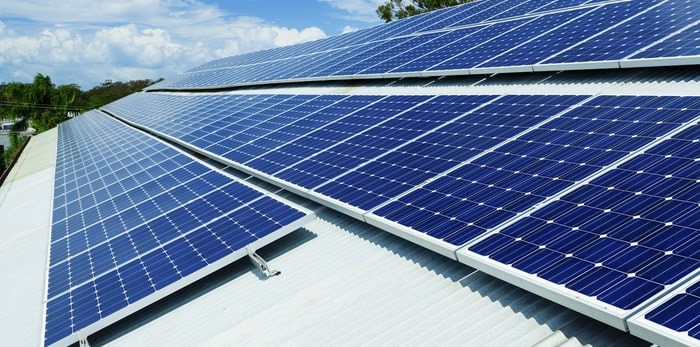Can a high school for hundreds of students and teachers be built to net-zero environmental standards?
To make the school net-zero — i.e., it won't use more energy than it produces — a number of innovations could be included in the design, such as use of solar panels and wind turbines, rain water to flush toilets, and geothermal energy to heat buildings.
 Solar panels on roof/Shutterstock
Solar panels on roof/Shutterstock
At a School District 43 board of education meeting Tuesday night, school trustees will be asked to approve an initiative to design the new Burke Mountain secondary school in Coquitlam as one of the greenest schools in Canada.
The joint middle/secondary school for Coquitlam’s newest neighbourhood will be needed by 2023, and although the province has yet to approve the project, planning is already underway, with the goal of adding numerous green features to make the school more energy efficient.
“During a time where topics such as climate change, environmental education and sustainability are at the forefront of minds in our community and around the world, we have an opportunity to show the province that along with the need for a new school, we are willing to support a much higher 'green' standard,” the report states.
Among the innovations that could be considered include covering the entire roof with photovoltaic panels to catch the sun’s energy and make electricity; the district says the panels could be paid off in 18 to 20 years through electricity savings.
As well, geothermal heating and cooling could be used to maintain temperatures in the school, although more testing would be needed to determine the capacity of the site.
Wind could be used to generate electricity; solar power could be used to heat water; the building envelope could be designed to reduce heat loss; HVAC systems could be designed to maximize efficiency; and the building could be located to harness nature around it, the report says.
A number of measures could be employed to reuse water, such as using rain water to flush toilets, and sewer treatment could be done on site while building materials would be green and sourced locally, when possible.
The report also suggests measures could be implemented to reduce the number of people who drive to the school, such as having more bike racks or other features to encourage cycling.
Still, the report notes that such innovations would be costly and would require fundraising, possibly through partnerships, to augment provincial funding.
Among the steps necessary include SD43 board commitment to build to a much higher standard than typical LEED (Leadership in Environmental Design) Gold, staff are asking the board to seek endorsement from Coquitlam mayor and council to support the initiative; to initiate a public campaign to search for partners to help cover the premium cost; and to get support from the provincial government.



